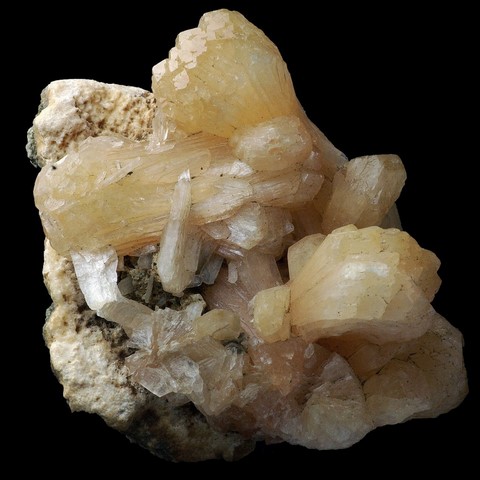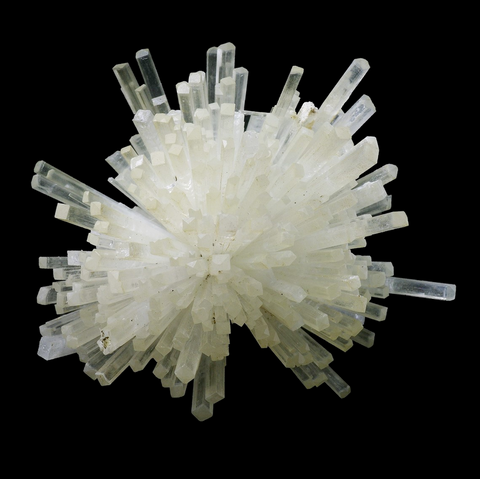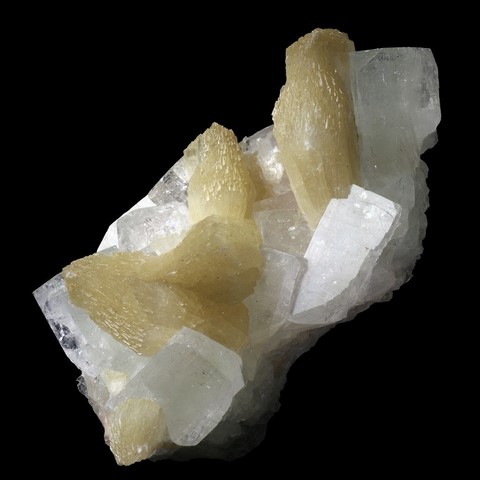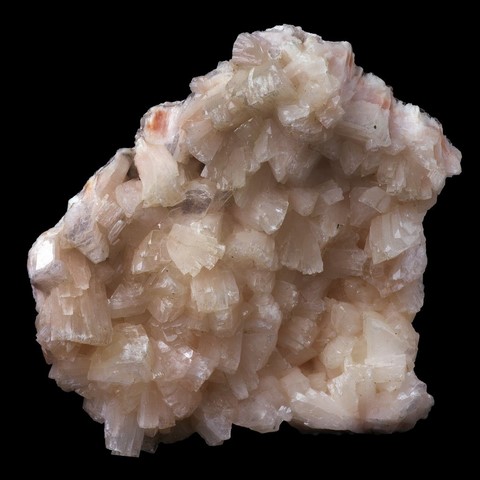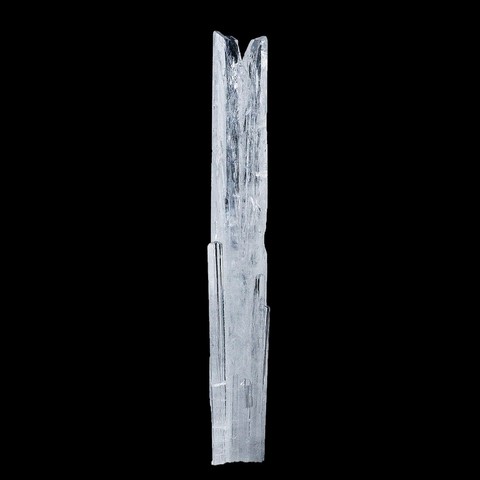 Zeolite - Encyclopedia
Zeolite - Encyclopedia
Class : Silicates
Subclass : Tectosilicates
Crystal system : Variable
Chemistry : Variable
Rarity : Common
Zeolites constitute a large group of hydrated aluminosilicates, very similar in terms of composition, association and mode of deposit. Their general formula is (Na,Ca,Ba)1-2(Al,Si)5O10.nH2O. Their name comes from the Greek zein (to boil) and lithos (stone), alluding to the bubbling that occurs through the release of water vapor when these minerals are heated. The crystalline framework has the particularity of allowing the SiO4 tetrahedra to enter more or less wide channels into which the water and the large cations are inserted : water can represent up to 20% of the weight of a zeolite. This integration of water molecules gives zeolites a low density (2 to 2.4) and a hardness of 3.5 to 5.5. The minerals of the zeolite group are generally weakly colored. They are frequently classified according to their morphology : elongated zeolites (thomsonite, natrolite, scolecite...), pseudocubic zeolites (phillipsite, harmotome, chabazite, gmelinite...), zeolites with pearly cleavages (stilbite, heulandite...). Analcime, classified by certain authors in this group, then belongs to the pseudocubic zeolites. The formation of zeolites is conditioned by a water-rich environment, low temperatures and pressures. These minerals generally come from the alteration of feldspars and feldspathoids and are therefore very common in siliceous tuffs and volcanic glasses affected by hydrothermal water circulations. Zeolites also appear in very weakly metamorphic rocks where they define the "zeolite facies", which ensures the transition between diagenesis and metamorphism strictly speaking. Finally, zeolites are also formed under the action of low and medium temperature hydrothermal solutions : they can then partially constitute the matrix of certain hydrothermal veins, and especially the filling of basaltic cavities, remnants of bubbles that appeared during the cooling of the magma. It is in these basaltic cavities that zeolites acquired their letters of nobility, generating extraordinary crystallizations universally known to collectors (India, Iceland, etc...). Zeolites have important industrial applications, based on their channel structure which allows molecular sieving (used in oil cracking), the presence of water which can be evacuated by heating (hydration and dehydration properties), the existence of weakly bound cations which give them very important ion exchange properties. To satisfy these industrial needs, artificial zeolites are produced in large quantities, the exploitation of the deposits being insufficient.
Hardness : 3.5 to 5.5
Density : 2 to 2.4
Fracture : Variable
Streak : White
TP : Translucent to transparent
RI : Variable
Birefringence : Variable
Optical character : Variable
Pleochroism : Variable
Fluorescence : Variable
Solubility : Hydrofluoric acid
Magnetism : None
Radioactivity : None

